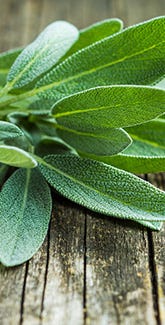Cheers to Super Squash!


Squash Growing Guide
Summer, winter, zucchini, patty pan, crookneck, straightneck, spaghetti, acorn. The list of squash types is long, but the short answer to whether you should grow them is YES! They're all easy to plant, unfussy in the garden, generous yielders, and offer so much variety in the kitchen. And let's not forget how amazing they are when it comes to nutritional value.
Sowing: Start squash seeds indoors 3-4 weeks before the last frost date. Prior to transplanting, work generous amounts of compost or dried manure into the soil because squash love rich, well-drained soil. Never crowd squash. Competition for sun, space, or nutrients will decrease the number of female flowers and thus the production. Transplant squash plants to hills with 3-4 plants per hill and at least 12 inches between plants. Hills should be 10 feet apart.
Growing: We recommend you cover your squash hills with 6mm black polyethylene plastic. The plastic keeps the soil warm, protects against insects and soil borne pathogens, reduces weeding, and leads to earlier and higher yields. Water your squash plants regularly but be sure not to overwater, keeping in mind that squash prefer well-drained soil. They also prefer direct sunlight, which makes them ideal for planting in larger spaces like open fields.
Picking: Harvest summer squash when it is still young and tender – usually when the plants are 4-8 inches long or the patty pans are 3 inches in diameter. The more you pick summer squash, they more they vines will produce. If the squash get overgrown, harvest and use them for baking. Harvest winter squash when they are full grown, their skins have turned color and hardened, and they pass the “thumbnail test” (when the skin resists puncture by a thumbnail). Winter squash will keep for months if left in a cold, dry, and dark storage area.
Eating: These powerful vegetables have the ability to "squash" just about any ailment or health problem. That's because they're literally packed with an amazing amount of vitamins, minerals, antioxidants, and carotenoids. From vitamins like A, B6, C, and E, thiamin, niacin, and folate to minerals like manganese, phosphorus, calcium, iron, potassium, and magnesium, squash pretty much has it all. So it’s a superstar when it comes to improving heart, lung, bone, and eye health, boosting immunity and blood circulation, and helping reduce inflammation.
Knowing: The two main categories of squash are summer and winter and it's easy to differentiate between them. While both are planted at the same time, summer squash varieties (zucchini, etc.) have tender, edible skin and are ready mid-summer, while winter squash varieties (acorn, spaghetti, etc.) have tough, inedible skin and are ready mid-fall.
Container Friendly? While it's been said that anything can be grown in a container provided the container is big enough, squash aren't really considered to be in the realm of container-friendly plants. Their vines sprawl and the fruit gets rather large, making them best suited for garden growing.



